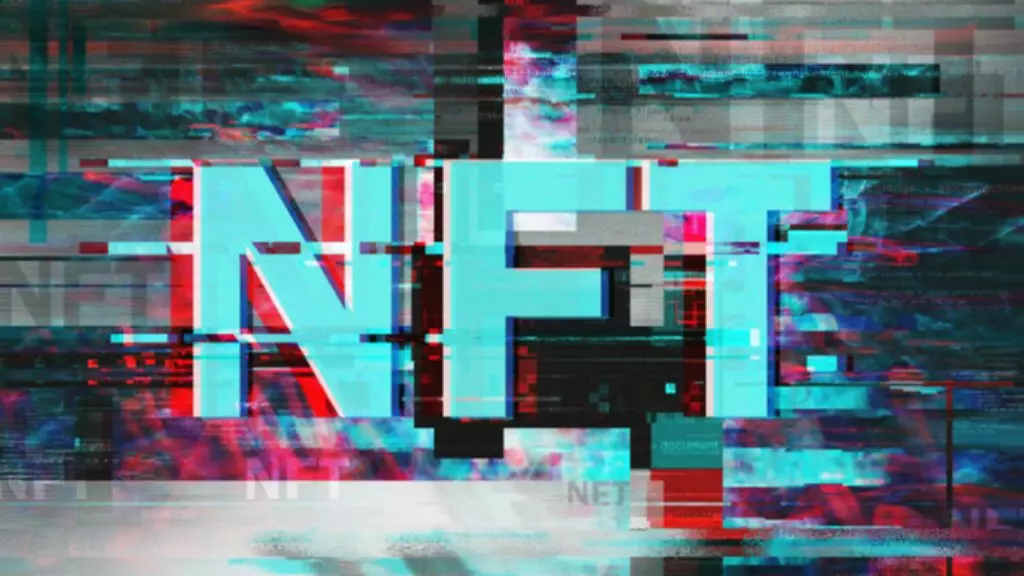+86-(0)768-6925905
Content
- Benefits of blockchain—The business value
- Open Interoperability as the Future of Blockchain Tech
- Join our free newsletter for daily crypto updates!
- Building Bridges with Polkadot
- What is a blockchain bridge?
- Ethereum Bridge Smart Contracts Polkadot
- Why do we need blockchain bridges?
- Bridging the gap between blockchains
Every blockchain project features specific defining parameters unique to the project, which create problems with interoperability. The working of a blockchain bridge can involve exchange of decentralized identities, off-chain information and smart contract calls. Best blockchain bridges enables better usability of assets from main blockchain networks on layer 2 networks. Since layer 2 solutions offer cost-effective and faster transactions, blockchain bridges can also offer conclusive benefits for scalability while reducing transaction fees. Blockchain bridges establish a credible impression of how they are important for the future of blockchain.
Formerly known as Fantom Anyswap, Multichain positions itself as a cross-chain router protocol, enabling the flow of data and assets across different blockchain networks. Force Bridge – a trustless bridge that enables What is a Blockchain Bridge cross-chain transactions between Nervos and a spectrum of blockchains. Nervos will use Force Bridge to connect directly to Cardano, which means that users will be able to transact using their existing Cardano wallets. How blockchain bridges work” by reflecting back on the basics of blockchain.
For example, the Ethereum-Polygon Bridge is a decentralized two-way bridge that works as a scaling solution to the Ethereum network. As a result, users can benefit from faster transactions and lower transaction costs. Modern blockchain technology has some limitations, especially when Web3 space is developing so rapidly.
Benefits of blockchain—The business value
By allowing data and tokens transferability between two blockchains builds connectivity and also a big impediment to the mass adoption of the technology. Blockchain bridges help reduce network traffic by distributing it across other, less loaded blockchains, thereby solving scalability problems. The ‘Trustless-bridge’ works more or less like a public blockchain network where anyone can join the platform without any permission. Blockchain bridges can do a lot of cool stuff like converting smart contracts and sending data, but the most common utility is token transfer.

Aside from enabling cross-chain transfers, blockchain bridges provide other benefits. They allow users to access new protocols on other chains and enable developers from different blockchain communities to collaborate. In other words, blockchain bridges are a critical component of an interoperable future of the blockchain industry. The second variant among bridges for blockchain networks would refer to a trustless blockchain bridge.
Open Interoperability as the Future of Blockchain Tech
As part of their compensation, certain CoinDesk employees, including editorial employees, may receive exposure to DCG equity in the form of stock appreciation rights, which vest over a multi-year period. Some bridges, known as unidirectional or one-way bridges, allow you to port assets only to the target blockchain and not the other way around. For instance, Wrapped Bitcoin allows you to send bitcoin to the Ethereum blockchain – to convert BTC to an ERC-20 stablecoin – but it doesn’t let you send ether to the Bitcoin blockchain. Generally, applications designed for one network only work within that network, limiting their potential for broader adoption. — Blockchain bridges are the key to unlocking interoperability between individual networks, allowing users to interact with assets across different networks. It opens the door to new opportunities as users can experience the perks from network to network.
3) With blockchain bridges, any data, information, and tokens can be transferred between two blockchain platforms. 2) Blockchain bridges help dApps take advantage of both systems, not only their host platform, by linking two networks. For example, a dApp hosted on Ethereum and linked to the EOS blockchain can take advantage of Ethereum smart contracts’ functionality and the scalability of EOS. Thanks to blockchain bridges, any data, information and tokens can be transferred between two blockchain platforms.
For example, bitcoin and Ethereum are the two largest cryptocurrency networks and have vastly different rules and protocols. Through a blockchain bridge, bitcoin users can transfer their coins to Ethereum and do with them what they otherwise could not on the bitcoin blockchain. That can include purchasing various Ethereum tokens or making low-fee payments. And in 2020, technology companies have repeatedly noted the importance of combining the efforts of large blockchain platforms, which until recently were created in an independent manner.
A blockchain protocol is, after all, basically a set of rules, enforced through computer code, that govern the relations and interactions between members of a peer-to-peer network. This provides a solid foundation upon which new types of platforms and applications can be built. Such attacks are far less likely to occur on networks with high levels of decentralization.
Join our free newsletter for daily crypto updates!
Several bridges have already been built or are in development in the testnet stage for the Polkadot ecosystem. That’s why you should always educate yourself on the potential risks of using bridges, as well as the specific bridge you are contemplating using. You can also use it on projects and platforms that are built on Ethereum, which opens the door for you to explore DeFi platforms without having to go through the process of exchanging. Despite having been answered repeatedly, this question keeps popping up with every new crypto bull run, with every new milestone reached. Blockchain provides data integrity with a single source of truth, eliminating data duplication and increasing security.

In other words, the higher the number of nodes, the harder it becomes to coordinate such an attack. At its core, a node is a computer that runs specialized software that allows it to be a part of a peer-to-peer blockchain network. Based on their type, nodes can have different responsibilities, the most important of which arguably being keeping a copy of the blockchain ledger.
An interoperable blockchain sector is critical to the industry’s future success. It’s pegged to the value of the asset it represents and typically can be redeemed for it at any point. Blockchain technology, especially bridging, is still at an early stage of development, so of course there will be some concerns. Users can enter the new platform and enjoy the benefits of different blockchains. The cooperation between different blockchains allows its users to have more choices.
Building Bridges with Polkadot
This game-changing technology is considered both innovative and disruptive because blockchain will change existing business processes with streamlined efficiency, reliability, and security. The name blockchain comes from the fact that the data is stored in blocks, and each block is connected to the previous block, making up a chainlike structure. You can’t modify or delete any block after it gets added to the blockchain. Trust, accountability, transparency, and security are forged into the chain.
- Data is broken up into shared blocks that are chained together with unique identifiers in the form of cryptographic hashes.
- On top of it, users have complete control over their assets at different times.
- An important factor contributing to the popularity of this sector is the successful attempt by DeFi developers to partially solve the compatibility problem.
- It opens the door to new opportunities as users can experience the perks from network to network.
Blockchain is a distributed ledger technology that uses cryptography to provide assurance and integrity to data and transactions. Blockchain networks enable many types of services, including secured databases, immutable ledgers, decentralized applications, decentralized finance, non-fungible tokens and cryptocurrencies. The Nervos ‘Common Knowledge Base’ is a permissionless, layer 1, open-source, proof-of-work blockchain protocol focused on creating the foundations for an interoperable universal public network. It allows any crypto asset to be kept in a secure, immutable, and permissionless environment with the added benefit of smart contracts and layer 2 scaling.
With numerous attacks on cross-chain bridges, the search for a more secure and robust bridge design continues. The development of the blockchain industry is driven by constant innovations. There are the pioneer protocols like the Bitcoin and Ethereum networks, followed by a myriad of alternative layer 1 and layer 2 blockchains. A blockchain bridge is a protocol connecting two economically and technologically separate blockchains to enable interactions between them. These protocols function like a physical bridge linking one island to another, with the islands being separate blockchain ecosystems. Therefore, the uses of a blockchain bridge are gradually gaining momentum in the decentralized applications ecosystem.
Here is an outline of the notable blockchain bridge variants you can use for transferring assets and information between blockchain networks. Just like physical bridges, the blockchain bridge connects two separate what is a blockchain bridge blockchain networks or applications. A blockchain bridge, aka a cross-chain bridge, connects blockchains together so that users can send and receive digital assets and data between different blockchains.
What is a blockchain bridge?
If you want to use Bitcoin on Ethereum’s blockchain, for example, Wrapped Bitcoin is the way to do it. Your BTC would get locked up at the bridge and the same amount of Wrapped Bitcoin would be minted on Ethereum’s network . It’s a huge deal in the world of decentralized finance because it introduces connections between previously isolated networks. The blockchain space has grown so much so quickly that the rest of the world is still trying to catch up.
Ethereum Bridge Smart Contracts Polkadot
If a bridge is custodial, that means only one centralized entity is in control of the assets. All wrapped Bitcoin is held by BitGo, a centralized digital asset trust company. With that comes many questions regarding the impact of blockchain bridges, their purpose, as well as their safety.
Why do we need blockchain bridges?
In a truly interoperable blockchain ecosystem, tokens, data and smart contracts could potentially travel between many different platforms. Those who are already familiar with Ethereum may know of the now archived Parity Bridge and the efforts being made to connect PoA sidechains to the Ethereum mainnet. The Parity bridge is a combination of two smart contracts, one deployed on each chain, that allow for cross-chain transfers of value. As an example of usage, the initial Parity Bridge proof of concept connects two Ethereum chains, main and side. Ether deposited into the contract on main generates a balance denominated in ERC-20 tokens on side. Conversely, ERC-20 tokens deposited back into the contract on side can free up Ether on main.
Any company or group of companies that needs a secure, real-time, shareable record of transactions can benefit from this unique technology. There is no single location where everything is stored, leading to better security and availability, with no central point of vulnerability. In a blockchain system, fraud and data tampering are prevented because data can’t be altered without the permission of a quorum of the parties.
In this way the user could use their BTC to take part in a decentralized finance smart contract on Ethereum via Polkadot. For example, a chain anchoring verifiable credentials on Polkadot could be used for KYC requirements by a gaming company built https://xcritical.com/ on Ethereum. Bridges allow applications to be even more decentralized, as they are no longer limited by their network of origin. A blockchain bridge is a connection that allows the transfer of tokens and/or arbitrary data from one chain to another.
